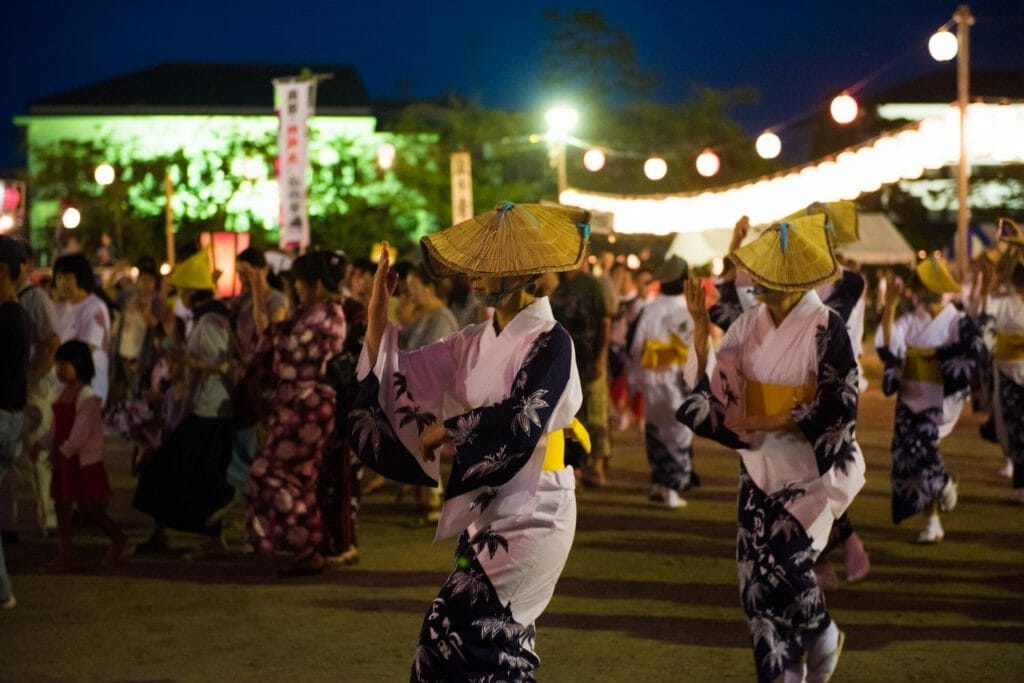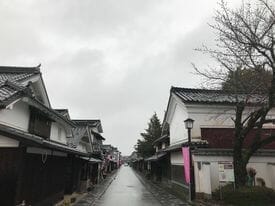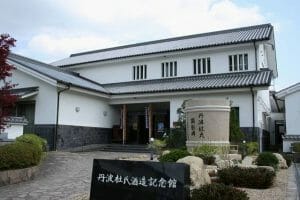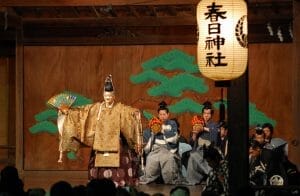Tambasasayama cycling ③–Cycling around a Japan heritage city

Tambasasayama city is designated as a Japan heritage site. Enjoy the historical atmosphere while cycling around to sites that are sung about in the Dekansho-bushi (a local folk song). There are lots of Tambasasayama specialties along the way. Have a relaxing time while enjoying local cuisine and browsing souvenirs.
Overview
| Total distance | 3.8km |
| Estimated time | 3 hours |
| Difficulty Level | ★☆☆☆☆ |
Caution:
For your safety, please refrain from looking at mobile phones on a moving bicycle. Come to a stop before searching for information.
Please follow traffic laws, keeping safety in mind.
Map
Red marking is the Tourist Information Center near the Sasayama Castle.
Spots to visit
❶Sasayama Castle Oshoin
Sasayama Castle Oshoin was built in 1609, the same year Sasayama castle was being built. Tragically, on the night of January 6, 1944 it caught on fire and burned to the ground. However, through the passions and donations of Tambasasayama citizens, Sasayama Castle Oshoin was rebuilt in March of the year 2000.
Sasayama Castle Oshoin is very large for a wooden building. Of existing similar buildings, it is equivalent in size and class to Tohzamurai in Ninomaru palace of Nijo castle in Kyoto. Considering Nijo castle is the highest class of building, used as primary accommodation for the Shogun on his visits to Kyoto, you can imagine how extravagant Sasayama Castle Oshoin is as one daimyo’s (feudal lord) study.
For more info:
❷Kawaramachi Tsumairi style merchant Houses street
*Tsumairi: Japanese traditional architectural style where the main entrance is on one or both of the gabled sides
As construction of the castle commenced, the surrounding town was also being developed. Being the side of the town facing Kyoto, Kawaramachi, is also considered the ‘Front Gate to Kyoto’, was the first to be built.
Passed down through generations, many people still live in the Kawaramachi Tsumairi style merchant Houses street. The front face being 5m – 8m, this style of building is more narrow and long than it is wide.
Kawaramachi was selected as an Important Traditional Building-Group Conservation Area by the government. Senbon goshi (Thousand lattice), Ara goshi (Rough lattice), Sode kabe (wing wall), Udatsu*, etc. bring the ancient appearance of the castle town to the present. (*Udatsu is the roof extensions used as wing walls in the Edo period to protect wooden roofs and prevent fires using a clay-type soil.)
Buddhist Temples built as a defensive facility at the time of the castle’s formation, such as Shinpukuji, Kanonji, and Honkyoji (which was the family temple of the lord), are a must-see part of the town.
(Reference: Sasayama Machinami Preservation Association, Shimokawara-machi Preservation Association Edited Issue “Kawaramachi: living life in the castle”)
Today, as old residences being used to open modern shops are increasing in number, we recommend a leisurely stroll while taking in the historic streets.

❸Ojiyama Makekirai Inari Shrine
On the West side of Ojiyama Park, red toriis line a long flight of stone steps creating a tunnel of gates up the hill. At the top, secluded on the Sumo ring, Heizamon Inari Shrine known as Ojiyama Makekirai Inari Shrine faces Ojiyama Inari Shrine.
For more info:
https://tourism.sasayama.jp/foreigner_post/ojiyama-makekirai-inari-shrine/
❹Tamba Toji Shuzo Memorial Hall
This hall was built as the memorial hall of the local sake brewing masters the Tamba Toji. Various brewing tools and materials are displayed. Due to modernization in brewing techniques and technology these artifacts are becoming rare. The sake brewing process is shown in each step for the exhibition.
There are some documents that explain the long and distinguished history of Tamba Toji. You can see the brewers history of terrible working conditions, as well as the brewing process of sake step by step.
Japanese sake is produced by the skill of the artisan which was brought about by their 300-year- history and tradition.
Its exquisite taste, fragrance, and color are brought out only by the top quality rice and water, together with the Tamba Toji who have been training sake brewers.
【Admission fee】100 yen contribution
【Inquiry】 Tamba Toji Union Tel: +81-79-552-0003

❺Tambasasayama City Historical Museum
The main building of the Tambasasayama Historical Art Museum was originally built as Sasayama’s district court in 1891, and was used as such until June of 1981. As the oldest wooden courthouse in Japan, the city decided that in order to preserve this important historical structure it would be renovated, leaving the exterior and courtroom in its original state, to be used as an art museum.
For more info:
https://tourism.sasayama.jp/foreigner_post/tamba-sasayama-city-historical-museum/
❻Kasuga shrine Noh stage
The Noh stage is located within the property of Kasuga shrine. Known as a great fan of Noh plays, Tadanaga Aoyama (the 13th feudal lord of Sasayama) had it built in 1861.
Uniquely built according to the lord’s tastes, big Tambayaki vessels were placed beneath the stage floor to enhance the sound of the actors’ feet stomping on the floorboards. It is said to be the most admired Noh stage west of Hakone.
Nationally designated Important Cultural Properties.

❼The Historical Area of the Aoyama Clan and Dekansho Museum
The Aoyama Historical Village consists of a central structure called ‘Kei En Sha’ surrounded by three ‘do-zou’ (storage buildings) and a ‘nagaya-mon’ (gate) which was also used as a residence for servants or guards.
The buildings were dismantled, relocated and reconstructed by the Aoyama family following the Hanseki Hokan*. As their second house, it houses their feudal clan’s governing documents, records, personal belongings and heirlooms, and also the Shin Toku Do’s (Sasayama school’s) book collection.
The property has been open to the public since 1987.
In 1998, the Aoyama-kai Foundation, which had been managing the Historical Museum, donated all their assets to Tambasasayama City. Since then, the city hall maintains the collection as a public archive and it is also used for study and research.
* Hanseki Hokan is a historical event that happened 150 years ago. The land and people that used to belong to the feudal lord were returned to the Emperor.
For more info:
https://tourism.sasayama.jp/foreigner_post/the-historical-area-of-the-aoyama-clan-and-dekansho-museum/

